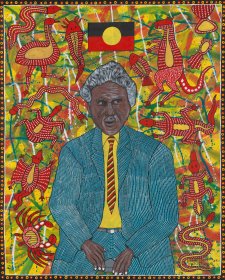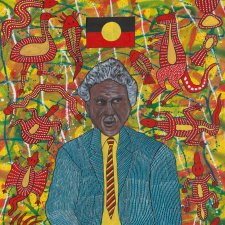Neville Bonner (1922–1999) was the first Indigenous Australian elected to federal parliament. Bonner’s mother was a Jagera woman; his father English. Born under a palm tree on Ukerebagh Island at the mouth of the Tweed River in northern New South Wales, he was educated by his grandmother, only attending school for two years in his mid-teens. He worked in labouring jobs including ringbarking, cane cutting, scrub clearing and herding stock before moving to Palm Island, his wife’s traditional home, where he lived for many years. There, he began his involvement in community affairs, joining the One People of Australia League, of which he became Queensland President from 1967 and National President from 1980. He joined the Liberal Party after the successful 1967 Referendum. In 1971, the Liberal Party invited him to fill a Senate vacancy; famously, soon after giving his maiden speech, he demonstrated how to throw a boomerang on the Senate Lawn. He was elected as Senator in four subsequent elections between 1972 and 1980. During his term, Bonner was Senate Deputy Chairman of Committees and served on the Joint Parliamentary Publications Committee, the Senate Standing Committee on Social Welfare, the Regulation and Ordinances Committee and the Joint House Committee. He frequently crossed the floor to vote with the Opposition on Indigenous matters. Along with environmentalist Dr Harry Butler, he was made Australian of the Year in 1979. After he resigned from the Liberal Party in 1983 and retired from politics, he served as a member of the Board of the Australian Broadcasting Corporation for eight years, was a patron of World Vision and Amnesty International, and was a member of the Council of Griffith University, from which he obtained an honorary doctorate in 1993. In 1984 he was made an Officer of the Order of Australia.







